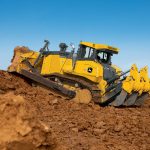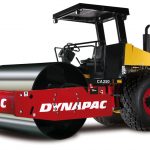In 2015, Elise Gregory, Senior Industry Analyst at MagikMe Equipment, wrote an article on the top 5 equipment types with the longest economic life, which is defined as the average economic life of a machine used under average conditions with normal repairs and maintenance. Based on Elise’s article, vertical earth drills for crane mounting, 3-wheel compactors and others were found to have the longest economic life. An interesting fact from the article is that vertical earth drills were found to have an average economic life of 23.1 years, while 3-wheel compactors had an economic life of about 20.6 years. We know the average asset is sold as a second hand once or twice before it is scrapped. However, there is much greater mystery around which types of equipment are sold and at which intervals throughout their economic life, whether sold once, twice or more often. To do this, we introduce the concept of point of disposition, which we define as a peak in the frequency distribution of age. Moreover, we study the peaks because it will likely provide more options of assets to choose from and yield a higher probability of landing a good deal.
55% of all models have a single point of disposition
To get a more granular look, we analyzed all 1,042 size class combinations for agricultural, construction and lift/access equipment. We leveraged more than 36 million records collected between late 2012 and late 2017 from the resale (assets listed for sale) and auction (assets sold at auction) channels and found very interesting results. Moreover, a large majority of small equipment, such as compact track loaders, crawler mounted compact excavators, skid steer loaders and small generator sets are types of equipment that have a single point of disposition. For example, the graph below shows a single point of disposition for compact track loaders with size class of 2,201 pounds and over. By a single point of disposition, we mean there is a single peak in the distribution of the histogram, which tells us that most compact track loaders 2,201 pounds and over are listed for sale or sold at auction when they are 5.5 years old.
Assets with two points of disposition account for about forty percent of all type/size class combinations we analyzed. Most assets are heavier with longer economic life than the assets discussed above. 4-wheel drive articulated wheel loaders, standard crawler dozers and crawler mounted excavators are some examples. We attribute the double points of disposition to the high purchase price and longer economic life. A large proportion of the equipment is leased as new, then when the lease is up in three to four years (depending on type/size class combination), it is likely to go to the resale market where it may be purchased by fleet managers and contractors who then use the asset for about five years before putting it back on the resale market, which is then sold to smaller local contractors or sold internationally. In the graph below, we can see crawler mounted hydraulic excavators of size class 33.1 – 40.0 metric tons are typically sold at around 4.5 years and at 9.5 years. Notice the second point of disposition is lower than the first.
The remaining 5% of type/size class combinations have three points of disposition. Typical assets tend to have very high economic life and they include vertical earth drills for crane mounting and 3-wheel compactors mentioned in the introduction as well as rough terrain hydraulic cranes, compactors and large generator sets. The graph below shows three points of disposition for rough terrain hydraulic cranes with size 25 to 29.9 metric tons. This graph shows a similar pattern of decreasing peaks at each successive point of disposition. It makes sense because some assets can be damaged on site, deemed unrepairable, or retired for some other reason. Newer cranes tend to be rented so one hypothesis is that they are leased at the first point of disposition, purchased by fleet managers and contractors in the second, and bought by smaller contractors on the third.
We found that construction equipment tends to be listed or sold once, twice, or three times. Smaller equipment tends to be listed or sold once while larger equipment tends to be listed or sold two or three times. The patterns observed can varied by manufacturer. For example, we found Bobcat skid steers have two points of disposition instead of the expected one. The information provided in this article is to inform sellers and buyers when to sell/buy construction equipment or not. Lift and access as well as agricultural equipment examples were not listed, but they follow the same general patterns.
Summary:
- There are one, two and three points of disposition in agricultural, construction and lift and access equipment.
- Smaller equipment tends to have one point of disposition while larger equipment has two or more.
- Only 5% of assets have three points of disposition.


